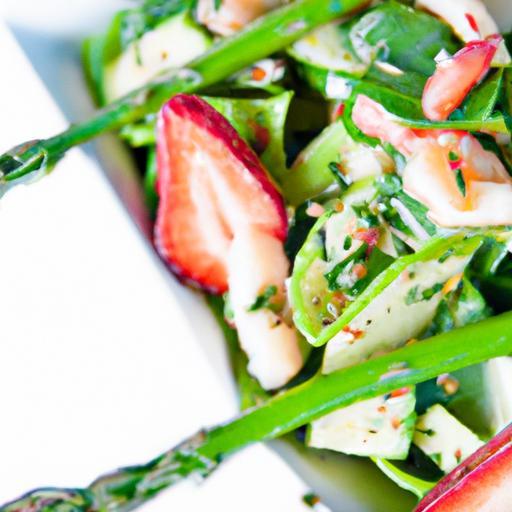In the vibrant world of leafy greens, freshness is king – and preserving that crisp, garden-fresh charm can often feel like a delicate dance against time. Whether you’re savoring the tender crunch of spinach, the peppery bite of arugula, or the hearty embrace of kale, keeping these verdant delights at their peak is both an art and a science. Welcome to the “Leafy Green Lifesaver: Ultimate Storage Guide for Freshness,” your go-to roadmap for extending the life of your leafy treasures. From clever hacks to science-backed tips, this guide will help you unlock the secrets to storing greens so crisp and vibrant, every bite tastes like the first harvest of spring. Get ready to elevate your kitchen game and say goodbye to wilted, sad leaves forever.
Leafy Green Lifesaver techniques can transform how you enjoy your favorite greens by maintaining their crispness and vibrant color for days. As a seasoned culinary content creator and food stylist, I’ve found that selecting the right varieties and mastering smart storage methods can turn ordinary greens into an effortless, fresh staple that elevates every meal. From buttery spinach and peppery arugula to sturdy kale and delicate baby lettuces, knowing which greens are best suited for your kitchen and how to preserve their freshness will save you time, reduce waste, and inspire creative dishes.
Prep and Cook Time
- Prep Time: 10 minutes
- Cook Time: Not applicable (storage-focused)
- Total Time: 10 minutes
Yield
- Storage for up to 1-2 weeks of fresh leafy greens
Difficulty Level
- Easy
Ingredients
- Fresh leafy greens: Choose varieties like baby spinach (5 cups), kale (3 bunches), romaine lettuce (2 heads), or arugula (4 cups)
- Paper towels or clean kitchen towels (2-3 sheets)
- Plastic or glass airtight containers with ventilation options
- Perforated produce bags or reusable mesh bags
- Bunched fresh herbs (optional, for added freshness)
Instructions
- Choose your leafy greens by selecting those with firm, brightly colored leaves, free of yellowing or slimy spots. Avoid bunches that feel heavy or damp.
- Gently rinse the greens under cold water to remove soil and grit, using a salad spinner or patting dry with towels. Excess moisture is the enemy of crispness.
- Dry thoroughly by spinning the leaves multiple times or laying them out on clean towels. Ensuring leaves are almost completely dry extends shelf life.
- Line your container with a layer of paper towel or a kitchen towel to absorb residual moisture. Place greens loosely inside, layering additional towels between if stacking multiple batches.
- Seal in a breathable container: Use a plastic container with vent holes or a perforated bag to allow airflow while maintaining humidity-this balance preserves crispness.
- Store in the crisper drawer of your refrigerator, where humidity is higher and temperature steady. Check the greens every 2-3 days, replacing damp towels as needed.
- If leaves become limp, revive them by submerging in ice water for 10 minutes, then thoroughly drying before returning to storage. This simple step breathes new life into tired greens.
Chef’s Notes
- Greens selection tip: Opt for sturdier greens like kale or collards if you shop infrequently; delicate leaves like arugula and butter lettuce benefit from quick use or extra careful drying.
- Container choice: Glass containers retain freshness longer and avoid plastic odors, but breathable lids or vents are key.
- Moisture control: Moisture can be your friend or foe; too much invites rot, too little causes wilting. Use fresh paper towels regularly.
- Make-ahead prep: Wash, dry, and portion your greens at the start of the week for grab-and-go ease, shaving time off meals.
- Herb enhancement: Adding a sprig of fresh rosemary or thyme into your storage container can subtly prolong leafy green freshness by inhibiting bacterial growth.
Serving Suggestions
Once your leafy greens are perfectly crisp and refreshed, they become a versatile base or accent. Use baby spinach as a vibrant salad foundation, toss kale with warm garlic and olive oil for a nutrient-packed sauté, or layer romaine in a refreshing wrap. Garnish with edible flowers, toasted seeds, or shaved hard cheese to visually elevate the experience. A simple drizzle of lemon vinaigrette instantly balances the fresh, earthy flavors, creating dishes as beautiful as they are nourishing.

| Nutrient | Per Cup (Spinach) | Per Cup (Kale) | Per Cup (Romaine) |
|---|---|---|---|
| Calories | 7 | 33 | 8 |
| Protein | 0.9g | 2.9g | 0.6g |
| Carbohydrates | 1.1g | 6g | 1.5g |
| Fat | 0.1g | 0.6g | 0.1g |
To dive deeper into preserving other fresh produce, check our comprehensive fresh produce storage guide. For scientifically vetted tips, visit USDA Food Safety and Inspection Service.
Q&A
Q&A: Leafy Green Lifesaver – Your Ultimate Storage Guide for Freshness
Q1: Why do leafy greens wilt so quickly after purchase?
A1: Leafy greens are like little water balloons – they thrive on moisture but wilt fast when they lose it. Once picked, they start losing water and nutrients, causing that sad droop. Proper storage slows down this process, keeping your greens crisp and fresh longer.
Q2: What’s the best way to prep leafy greens for storage?
A2: Don’t wash them right away! Instead, gently shake off any dirt, then wrap your greens loosely in a clean, dry paper towel. The towel absorbs excess moisture that can cause spoilage. Store them in a breathable container or perforated bag in the fridge’s crisper drawer for optimal air circulation.
Q3: Which leafy greens are trickier to store and why?
A3: Delicate greens like spinach and arugula are tender and prone to wilting, while kale and collard greens are heartier and can handle a bit more roughhousing. Preparing fragile greens with extra care-like layering paper towels and avoiding overcrowding-can help maintain their freshness.
Q4: Can I store leafy greens with fruits?
A4: Be cautious! Some fruits, like apples and bananas, release ethylene gas, which speeds up spoilage. Keep your greens separate from ethylene-producing fruits to prevent premature aging. Your leafy friends prefer their own cool, ethylene-free zone.
Q5: What’s the secret weapon for reviving wilted greens?
A5: A quick dunk in ice-cold water can work wonders! Soak your limp greens for 10-15 minutes, then pat them dry gently. This hydrates the leaves and brings back that satisfying crunch, making them almost as good as fresh-picked.
Q6: How long can I realistically store leafy greens without sacrificing taste or nutrition?
A6: When stored properly, most leafy greens stay fresh for about 5 to 7 days. Heartier varieties like kale might last even longer. Remember, freshness isn’t just about taste-it’s about preserving all those vital vitamins and antioxidants.
Q7: Any pro tips for long-term leafy green storage?
A7: Absolutely! If you have excess greens, consider blanching and freezing them to preserve nutrients. Alternatively, turn overripe greens into delicious pestos or smoothies before they spoil. Waste not, want not!
Keep these leafy green lifesaving tips handy, and you’ll enjoy crisp, flavorful, nutrient-packed greens like a pro every time!
Closing Remarks
As the vibrant crunch of leafy greens finds its way from farm to fork, mastering their storage transforms every meal into a celebration of freshness. Armed with these savvy tips, you’re no longer at the mercy of wilting leaves or wasted greens. Instead, you become a guardian of garden goodness, extending the life and flavor of these nutritional powerhouses. So, tuck your greens into their leafy sanctuary with care, and let each bite remind you: freshness isn’t just a goal-it’s a leafy green lifesaver shaping your healthiest, most delicious days ahead.








